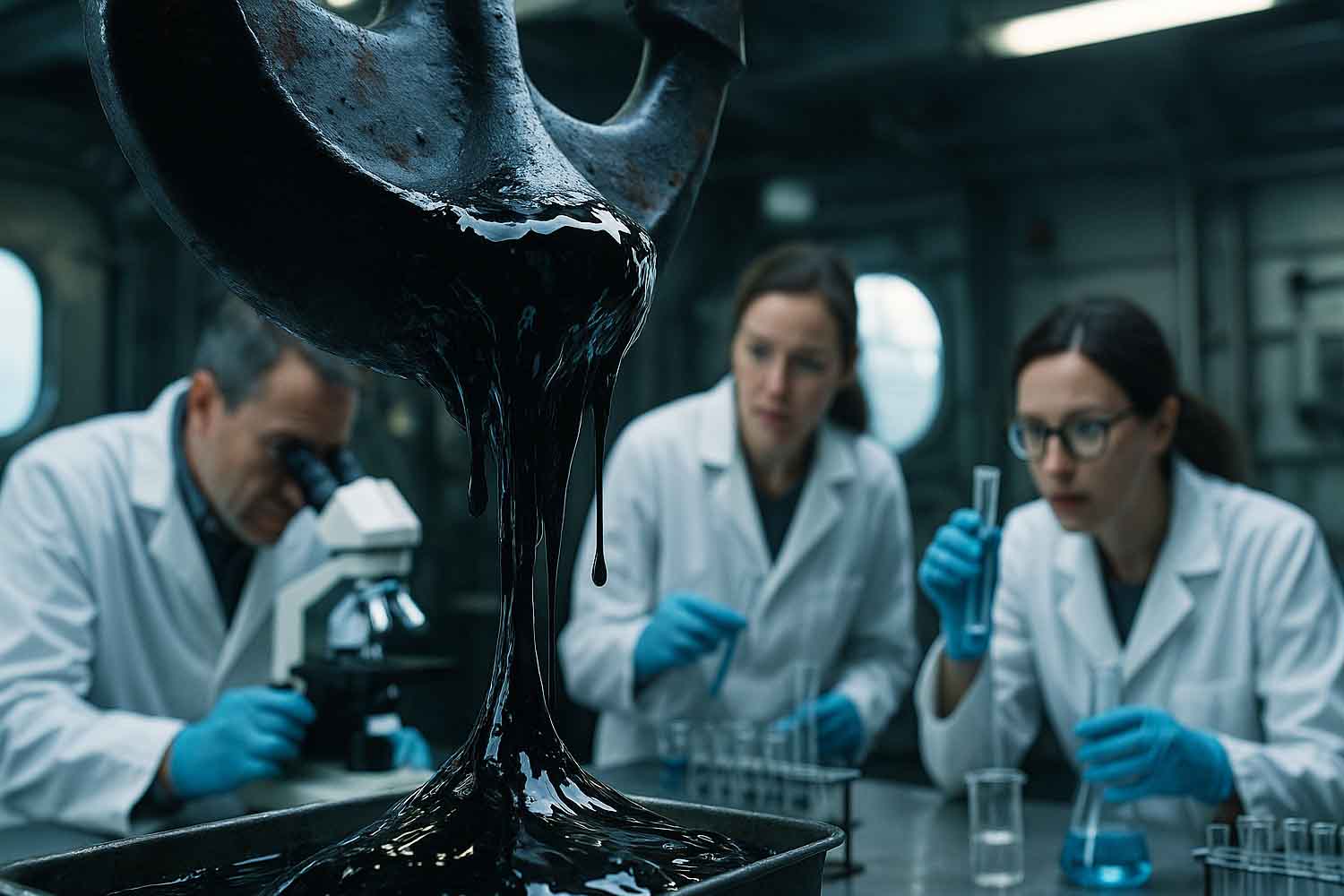A sticky black goo found on a ship’s rudder revealed a hidden microbial world, filled with unknown life. Now scientists are exploring its potential for biofuels and more.

Table of contents
Sticky, black, and scentless, yet undeniably strange-looking—this is how ShipGoo001 made its debut, clinging to the rudder of an American research vessel. At first glance, it looked like nothing more than grime. But under the scrutiny of scientists, this murky residue revealed something extraordinary: a thriving microbial ecosystem, most of which was completely unknown to science.
An accidental breakthrough
It all started with a dark smear trickling from the rudder of the Blue Heron, a research ship operated by the University of Minnesota Duluth, just back from a mission on the Great Lakes. No one on board thought twice about it—until one of the ship’s technicians, puzzled by the oddly viscous substance, decided to take a sample and send it to the lab.
There was no specific theory. Just curiosity. But when scientists put it under the microscope, they were stunned. ShipGoo001 was alive—teeming with life, in fact. Anaerobic microorganisms, able to survive without oxygen, were living in this sealed, metallic space where no one would ever expect to find biological activity.
Some of the genetic sequences they uncovered resemble those of bacteria found in extreme or polluted environments—such as oil sludge, coastal industrial zones, or the deep ocean floor. That was intriguing enough. But then came the real twist: a significant portion of the DNA didn’t match anything currently catalogued. These were brand-new microorganisms, organisms that had never been classified before.
Life finds a way—even in steel and shadow
Researchers noted that the discovery is yet another reminder of just how tenacious life can be. The rudder of a ship is cold, dark, metallic, sealed off from air and light. It’s a dead zone—by all logical accounts, utterly inhospitable. Yet here it was, home to a complex and active microbial community.
That contradiction spurred the team to dig deeper. As microbiologist Cody Sheik put it, the slime may have formed gradually in an environment not unlike the ones humans routinely build: pipes, tanks, and crevices in metal. These artificial spaces may well hide ecosystems of their own—entire biological worlds we’ve simply never noticed.
There are a couple of theories on how ShipGoo001 came to be. One proposes that it slowly accumulated from remnants of lubricants used over the years, dating back to when the ship was purchased nearly thirty years ago. Another idea suggests the goo arrived via so-called “marine snow”—tiny clusters of organic material that drift downward through the water, carrying microorganisms from one place to another.
Neither explanation has been confirmed. But what struck many scientists is how it all started from a simple, even naive question: “What is this stuff?” That one moment of curiosity opened the door to a startling scientific revelation.
The science continues
The researchers are now preparing a formal scientific paper that will include a full DNA sequence of the sample. The data will be made available to the broader scientific community, enabling further investigation. Some of the organisms already identified—particularly methanogens—could have real potential in the development of alternative biofuels, thanks to natural processes they already perform.
Meanwhile, the team has launched a broader monitoring campaign. They’re now collecting samples from other vessels to determine whether ShipGoo001 is unique, or just the first sign of a widespread, overlooked phenomenon.
One small act of observation has opened a window into an unknown microcosm, quietly thriving in the most unexpected place: the rudder of a ship.
Source: UMD
